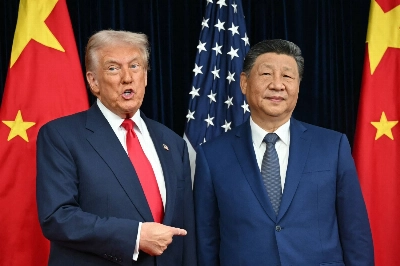A detachment of four U.S. E/A-18G Growler aircraft and about 120 personnel have arrived in the Philippines to help train that country's forces — and patrol its airspace and seas — amid Manila's territorial dispute with Beijing in the South China Sea, the U.S. Navy's 7th Fleet said in a statement released Thursday.
The statement made a veiled reference to the U.S. Navy's so-called freedom of navigation operations in the disputed waters, where Beijing's land-reclamation projects have created what Washington calls a "great wall of sand."
It said the detachment, which arrived at Clark Air Base on Wednesday, will also "support routine operations that enhance regional maritime domain awareness and assure access to the air and maritime domains in accordance with international law."

















With your current subscription plan you can comment on stories. However, before writing your first comment, please create a display name in the Profile section of your subscriber account page.